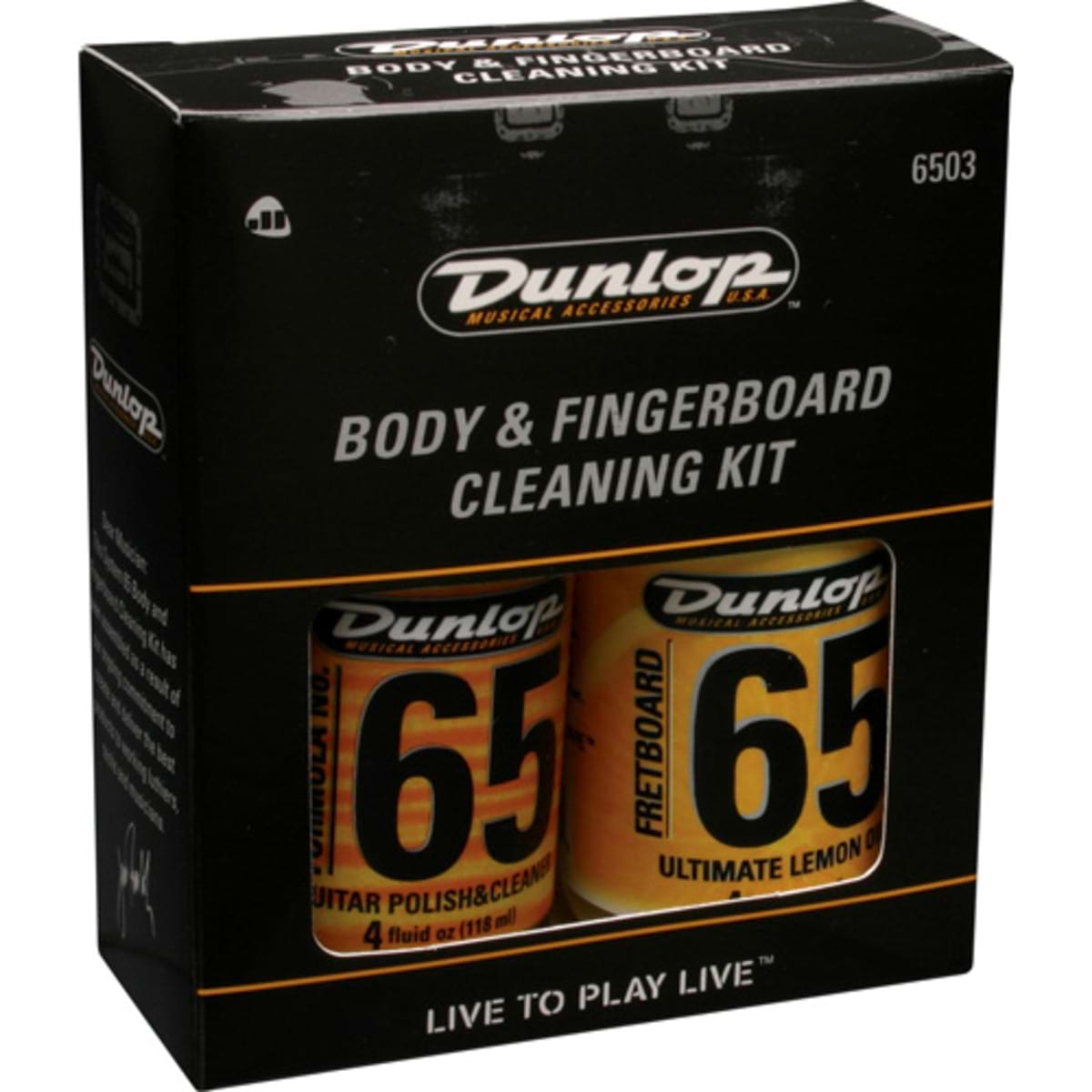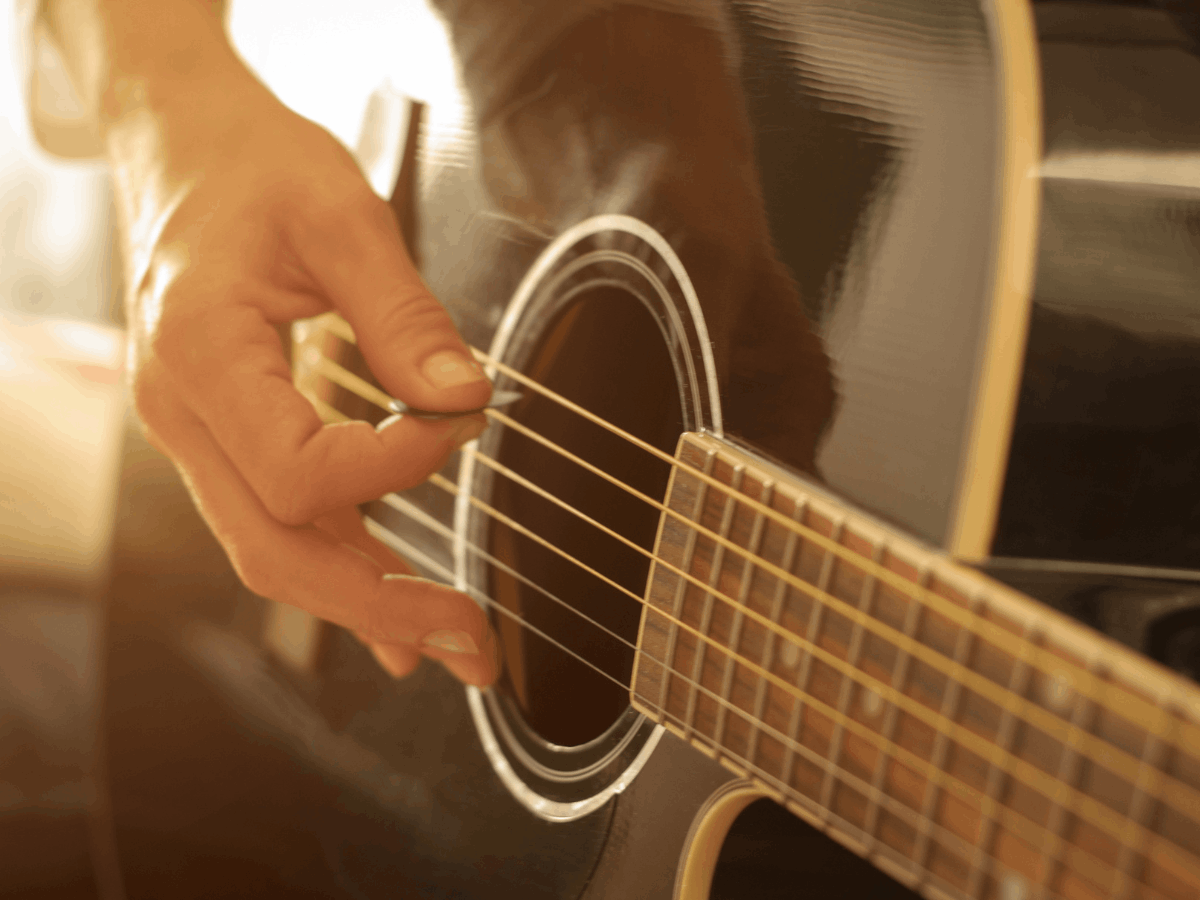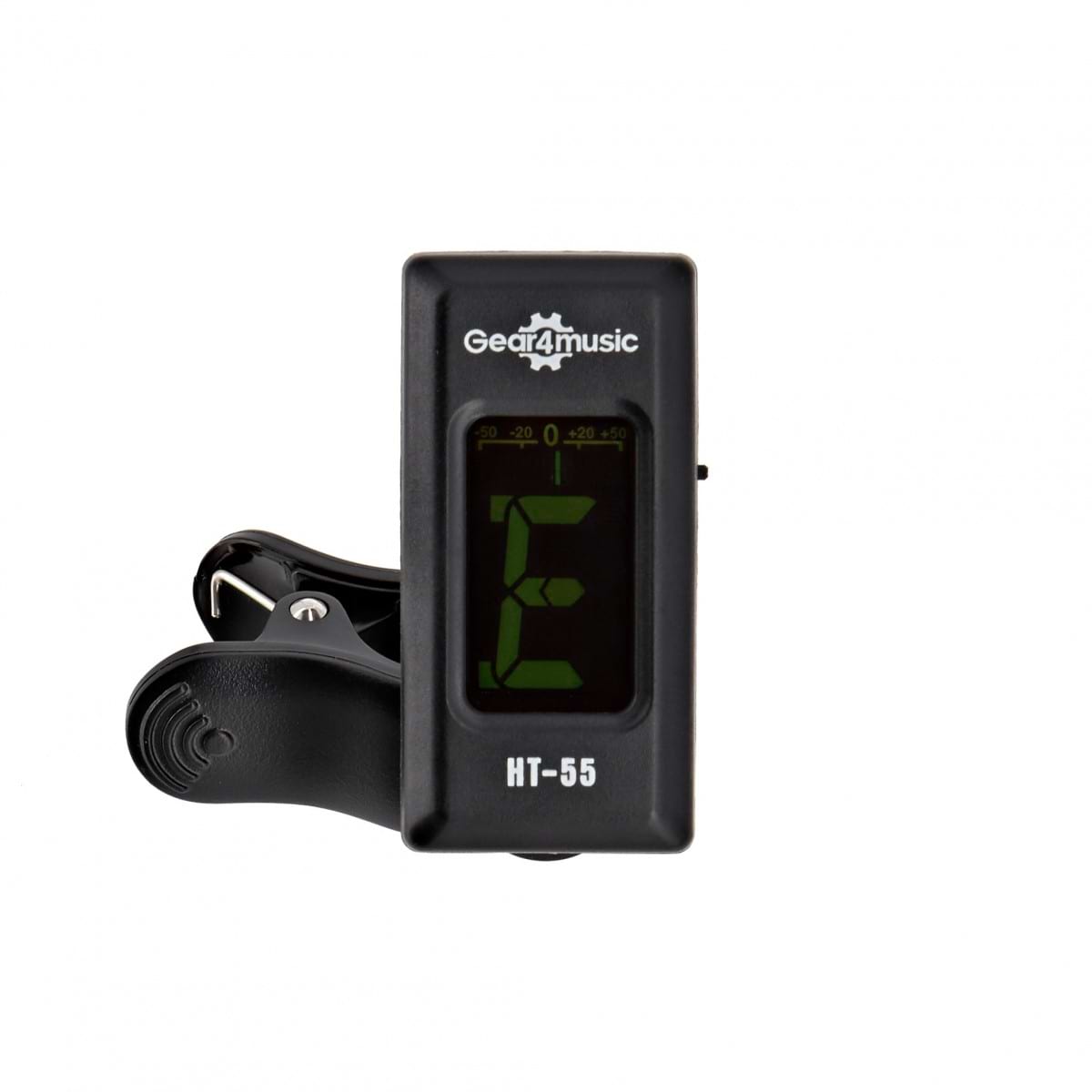Best
Classical Guitar String
-
Overall: High-quality materials and construction ensure stable tuning
-
Best Feature: Offers a bright and articulate sound
-
TedScore™: 8.5/10
Best
Tuner for
Classical Guitar
-
Overall: Accurate tuning to within 5 of a semitone
-
Best Feature: Lightweight and portable
-
TedScore™: 7/10
Best
Capo for Classical Guitar
-
Overall: Sturdy and reliable design that's built to last
-
Best Feature: Convenient micro-dial thumbscrew
-
TedScore™: 8/10
Have you ever had trouble getting the perfect sound from your classical guitar?
If you want that sweet, delicate tone, it’s time to learn how to restring a classical guitar. Changing the strings makes it easier to play and refreshes the whole feel of your music.
You can change how your guitar looks and sounds in just a few steps. Imagine the joy of strumming and hearing crisp, clear notes that ring out with energy.
Are you ready to make your classical guitar sing again? Keep reading, and let’s give your guitar a new life together!
Why Should You Change Classical Guitar Strings?
Changing classical guitar strings is vital for several reasons:
Sound Quality

Over time, classical guitar strings lose their brightness and clarity due to oxidation, dirt buildup, and natural wear.
By replacing old strings with new ones, you can restore your instrument’s vibrant and crisp sound, ensuring optimal tone quality.
Intonation and Tuning Stability

As strings age, they tend to stretch and become less elastic. This can lead to intonation issues and difficulty keeping the guitar in tune.
Fresh strings provide better intonation and tuning stability, allowing you to play in tune across the fretboard and reducing the need for frequent adjustments.
Playability and Responsiveness

New strings offer improved playability and responsiveness. They are easier to fret, bend, and perform techniques like vibrato.
This enhanced playability allows for greater control over dynamics and expression while playing.
Projection and Volume

As strings wear out, their ability to produce volume and projection diminishes.
Changing strings regularly ensures that your guitar retains its ability to project the sound effectively, allowing you to be heard clearly whether you’re playing in a small room or a larger venue.
Hygiene and Aesthetics

Strings accumulate dirt, sweat, and oils from your fingers over time, affecting their sound and appearance.
Replacing old strings keeps your guitar clean and visually appealing, enhancing its overall presentation.
How Often to Change Your Guitar Strings

When it comes to guitar maintenance, changing your guitar strings regularly is an essential task every guitarist should perform. Strings are subjected to constant tension, wear, and exposure to dirt and oils from your fingers, which can gradually degrade their tone and playability.
To maintain optimal sound quality and performance, changing your guitar strings regularly is recommended.
The frequency of string changes depends on several factors, including your playing style, the type of strings you use, and personal preference.
As a general guideline, changing your guitar strings every 1-3 months or sooner if you notice any signs of wear or deterioration is recommended.
What You Need for Stringing a Classical Guitar
String Winder/Cutter
A string winder is a small, hand-held tool designed to quickly and easily remove strings by winding them off the guitar. It can also quickly install new strings by winding them onto the tuning pegs.
Most string winders also come equipped with a steel string cutter, allowing you to quickly cut away excess string after installation.

COMES WITH: peg winder with a built-in clipper, bridge pin puller and string stretcher
FEATURES: Good for All Types of Guitar
D'Addario Guitar
Pro-Winder String Winder
When you check the price above, you’ll see there are loads of great places to buy this item. Our personal favorite is Gear4music.
It is the largest music retailer in the UK and fast becoming the most respected online music shop in the US too. Their customer service is excellent, they have competitive prices, really fast shipping, and usually have the longest guarantee.
Most professional musicians use Gear4music, so there is no reason why you shouldn’t too!
- Ergonomically designed
- Compact, Easy to Carry
- An All-in-One Tool for Restringing
- None!
The professional musician who wrote this article combined many things,
from the product build, manufacturer’s reputation through to feedback
from other users, to create our famous TedScore™.
Cleaning Materials
Before you begin stringing your guitar, it’s essential to clean it thoroughly. Dust, sweat, and grime can accumulate over time and affect the sound quality and playability of the instrument. Cleaning materials include a soft cloth and a suitable guitar cleaner.
The cloth wipes the guitar’s surface, removing dust or loose particles. A guitar cleaner acts to deep-clean the fretboard and body, removing oils and grime that a simple cloth can’t.

FEATURES: Comes with formula 65 Polish & Ultimate Lemon Oil
OTHER INFO: Comes with two cleaning cloths
Dunlop System 6503 Body And Fingerboard Cleaning Kit
When you check the price above, you’ll see there are loads of great places to buy this item. Our personal favorite is Gear4music.
It is the largest music retailer in the UK and fast becoming the most respected online music shop in the US too. Their customer service is excellent, they have competitive prices, really fast shipping, and usually have the longest guarantee.
Most professional musicians use Gear4music, so there is no reason why you shouldn’t too!
- Quick application process
- Removes dirt, grime, and buildup effectively
- Preserves the finish with the proper chemical balance
- Provides invisible stain and moisture protection
- Leaves a residue-free shine
- Body polish runs out quickly.
- Lack of clear instructions can make it confusing for first-time users.
The professional musician who wrote this article combined many things,
from the product build, manufacturer’s reputation through to feedback
from other users, to create our famous TedScore™.
Steps to Change Classical Guitar Strings
Step 1: Removing the Old Strings

Using your string winder/cutter, loosen the strings individually. Starting with the bottom E-string, turn the tuning peg counterclockwise until it comes off. Remove the string and set it aside for later disposal.
Repeat this process for the remaining strings, from low to high pitch. Take care not to twist the strings excessively, as this can cause them to break.
Step 2: Preparing the New Strings

Before installing the new strings, preparing them for use is essential. Start by stretching out each string with your hands to relieve tension during transport.
This will help ensure that the strings remain in tune after installation.
Next, check your guitar’s bridge and ensure that all slots are clean and free of dirt or buildup before stringing. Any obstructions can interfere with the strings and reduce their sound quality.
Step 3: Installing the New Strings

Start by running one end of the string through the bridge slot, then thread it up towards the tuning peg. Make sure to leave a few inches of slack so you can wind the string on easily.
Once you’ve threaded the string, begin winding it up towards the tuning peg, starting from the bottom (closest to the bridge) and working your way up. Wind as tightly and evenly as possible without overtightening.
For extra security, wrap any excess string around itself several times before trimming it off with the string cutter.
Repeat this process for each of the remaining strings. Once you’ve finished installing your new strings, check their tuning and adjust as necessary.
Step 4: Tuning the Guitar

Use an electronic tuner or a pitch pipe to adjust each string until it is in tune with itself and all other strings.
If you’re new to tuning guitars, this may take some practice, but with patience and practice, you’ll soon get the hang of it.
Start with the thickest string (the low E string). Pluck the string and adjust the tuning peg as needed until the string is tuned to E.
Move to the following string (A) and repeat the process, tuning it to the appropriate pitch.
Continue tuning each string in order, from the thickest to the thinnest (E, A, D, G, B, high E), adjusting the pegs as necessary.
After tuning all the strings, repeat them to ensure they are correctly in tune. Sometimes adjusting one string can affect the tuning of others, so it’s important to double-check.

Step 5: Clipping Excess Strings and Clean the Guitar

Once you’ve finished tuning the strings, use your string cutter to trim any excess length. Take care not to cut too close, or you may risk damaging the bridge of your guitar.
After clipping away the excess strings, it’s time for a final clean. Use a soft cloth dampened with guitar polish to wipe down all surfaces, removing any dust or residue left behind from the restringing process.
Tips for Changing Guitar Strings
The key to successful restringing is preparation. Here are some tips to keep in mind for a quick and easy string change:
Tip 1: Choose the right strings.
Tip 2: Stretch your new strings.
Tip 3: Tune the guitar regularly.
Bonus: Accessories for your Classical Guitar

DESIGNED FOR: Beginners
STRING TENSION RATING: Normal
FEATURES: String gauges .028 .029 .032 .035 .040 .043
FENDER 100 CLASSICAL NYLON CLEAR, SILVER TIE END STRINGS
When you check the price above, you’ll see there are loads of great places to buy this item. Our personal favorite is Gear4music.
It is the largest music retailer in the UK and fast becoming the most respected online music shop in the US too. Their customer service is excellent, they have competitive prices, really fast shipping, and usually have the longest guarantee.
Most professional musicians use Gear4music, so there is no reason why you shouldn’t too!
- Clear and warm tone
- Made by Fender
- You pay slightly for the name
The professional musician who wrote this article combined many things,
from the product build, manufacturer’s reputation through to feedback
from other users, to create our famous TedScore™.

FEATURES: Accurate tuning to within 5 of a semitone
OTHER INFO: Comes with a calibration feature for A=440Hz tuning
HT-55 Headstock Chromatic Tuner by Gear4music
When you check the price above, you’ll see there are loads of great places to buy this item. Our personal favorite is Gear4music.
It is the largest music retailer in the UK and fast becoming the most respected online music shop in the US too. Their customer service is excellent, they have competitive prices, really fast shipping, and usually have the longest guarantee.
Most professional musicians use Gear4music, so there is no reason why you shouldn’t too!
- Easy to use with automatic note detection
- Visual confirmation with the green display when perfectly tuned
- Lightweight and portable
- Affordable and great value for money
- Powered by a long-lasting CR2032 battery
- May struggle to detect lower frequencies on larger instruments
- The display might be small for some users
The professional musician who wrote this article combined many things,
from the product build, manufacturer’s reputation through to feedback
from other users, to create our famous TedScore™.

PERFECT FOR: All level
FEATURES: Lightweight Cast-Aluminum construction
OTHER INFO: Works with electric and acoustic guitars
Fender Dragon Capo, Black
When you check the price above, you’ll see there are loads of great places to buy this item. Our personal favorite is Gear4music.
It is the largest music retailer in the UK and fast becoming the most respected online music shop in the US too. Their customer service is excellent, they have competitive prices, really fast shipping, and usually have the longest guarantee.
Most professional musicians use Gear4music, so there is no reason why you shouldn’t too!
- High-quality Fender design
- Lightweight and easy-to-use design
- Micro-dial thumbscrew for quick and easy fret changes
- Not fit all guitar models
The professional musician who wrote this article combined many things,
from the product build, manufacturer’s reputation through to feedback
from other users, to create our famous TedScore™.

DESIGNED FOR: All guitarists
FEATURES: Adjustable height - all players can use
OTHER INFO: The large footrest can accommodate most foot sizes
Hercules FS100B Guitarist Footstool
When you check the price above, you’ll see there are loads of great places to buy this item. Our personal favorite is Gear4music.
It is the largest music retailer in the UK and fast becoming the most respected online music shop in the US too. Their customer service is excellent, they have competitive prices, really fast shipping, and usually have the longest guarantee.
Most professional musicians use Gear4music, so there is no reason why you shouldn’t too!
- Non-slip rubber ensures stability
- Sturdy steel frame
- The stand folds down so it can be compactly stored or transported
- None!
The professional musician who wrote this article combined many things,
from the product build, manufacturer’s reputation through to feedback
from other users, to create our famous TedScore™.

DESIGNED FOR: Musicians of All Levels
FEATURES: Nylon
OTHER INFO: 1" wide
Stagg Nylon Strap For Classical Guitar Or Ukulele
When you check the price above, you’ll see there are loads of great places to buy this item. Our personal favorite is Gear4music.
It is the largest music retailer in the UK and fast becoming the most respected online music shop in the US too. Their customer service is excellent, they have competitive prices, really fast shipping, and usually have the longest guarantee.
Most professional musicians use Gear4music, so there is no reason why you shouldn’t too!
- Durable nylon material
- Plastic sound hole hook neck strap
- Provides a comfortable and secure fit for your instrument.
- Length adjustable with two easy-to-use buckles
- The shorter length may not be suitable for all players, particularly those with larger frames or who prefer a longer strap.
The professional musician who wrote this article combined many things,
from the product build, manufacturer’s reputation through to feedback
from other users, to create our famous TedScore™.
How To Change Classical Guitar Strings
Summary
Learning how to string a classical guitar might seem complicated, but it’s pretty easy if you take your time.
Here’s a nifty breakdown of the process:
- Remove old strings: One by one to keep tension balanced.
- Tie the new string to the bridge: Secure it properly with a loop.
- Attach to the tuning key: Turn carefully, ensuring tension.
- Tune each string: Gradually to avoid breaking.
- Stretch and retune: As necessary for stability.
Remember, every guitarist develops their rhythm and method. I hope this guide has made the process clearer and more approachable for you. Happy strumming!
FAQ's
Restringing a classical guitar is not inherently problematic, but it does require patience and a bit of practice. The process involves removing the old strings, cleaning the guitar, threading the new strings through the bridge, tuning pegs, and then tuning the guitar.
It can be tricky for beginners, but plenty of online tutorials can guide you through the process.
Classical guitars come with a unique style of strings, requiring special care to ensure that they remain in top playing condition. As a general rule of thumb, it is recommended that you change your classical guitar strings every 3-6 months.
This will ensure optimal sound and performance, and it will help to protect your instrument from damage. However, if you practice or play your classical guitar more often than this time frame, it is best to change your strings more frequently.
Yes, the strings on a classical guitar should be changed regularly. This will ensure optimal performance and tone and help protect your instrument from damage.
When deciding how often to change your strings, consider the amount of practice you do and how frequently you play.
Stringing up a classical guitar is similar to any other type of guitar.
First, you must remove the bridge pins and then loosen the strings.
Next, you must thread the nylon string through the bridge pinhole and pull it up until it aligns with the nut.
You’ll need to stretch the string, tune it up, and repeat this process for each string.
The type of strings you should use on a classical guitar mainly depends on your preference, playing style, and sound quality. Commonly, classical guitars are strung with either nylon strings or a mixture of nylon and other materials.
Nylon strings produce a soothing, mellow sound, while combinations featuring materials such as carbon or titanium can allow for louder and more defined tones. Try several string brands and tensions to find the most suitable option for your playing technique and desired sound.
It’s essential to regularly check your guitar strings for signs of wear and tear.
Noticing a drop in sound quality, seeing rust on the strings, or feeling a lack of tension in the strings can all be indicators that it’s time for a new set.
If you find it difficult to tune or press down on the strings, it’s probably time to replace them.











I’ve always dreaded changing strings, but this article makes it seem less daunting. The step-by-step guide is a lifesaver. About the string winder/cutter, any brand recommendations or will any do?
While I acknowledge the point on ‘Tuning and Stability’, I think there’s more to it than just switching strings. Humidity and temperature play a significant role too. Yes, fresh strings help, but without proper environmental control, your guitar’s tuning will still suffer regardless. It might have been beneficial to also touch upon the importance of maintaining a stable environment for your instrument.
If only changing my strings could make me play better hahaha
I found your section on ‘Projection and Volume’ to be particularly insightful. It’s a detail often overlooked by beginners, but it makes such a difference in performance. Well done on highlighting its importance, Lewis Turner.
Totally agree with this! Noticed a big change in my kid’s playing after switching strings.
Outstanding article, Lewis. As a music teacher, I find this guide extremely valuable for my students. The section on the importance of changing strings for sound quality and intonation is particularly well-explained. I’ve always emphasized the significance of hygiene in maintaining a guitar, and this article reinforces that beautifully. Bravo!
Totally agree, Mr. Navarro! Found this super helpful for someone like me just getting into classical guitar. 🙂
i never knew intonation got messed up cause of old strings. gotta check mine lol
hey, just started learning classical guitar. how do i know when it’s time to change the strings? sounds like a silly question but I wanna make sure i do it right. thanks!
Hey Lewis, I’m wondering about the part where you talk about changing strings due to ‘Hygiene and Aesthetics’. Is it really that critical? I mean, I get the aesthetics part to some degree, but hygiene? How bad can it get? And is there like a set timeframe for this or does it depend on how much you play? Thanks for shedding some light on this!